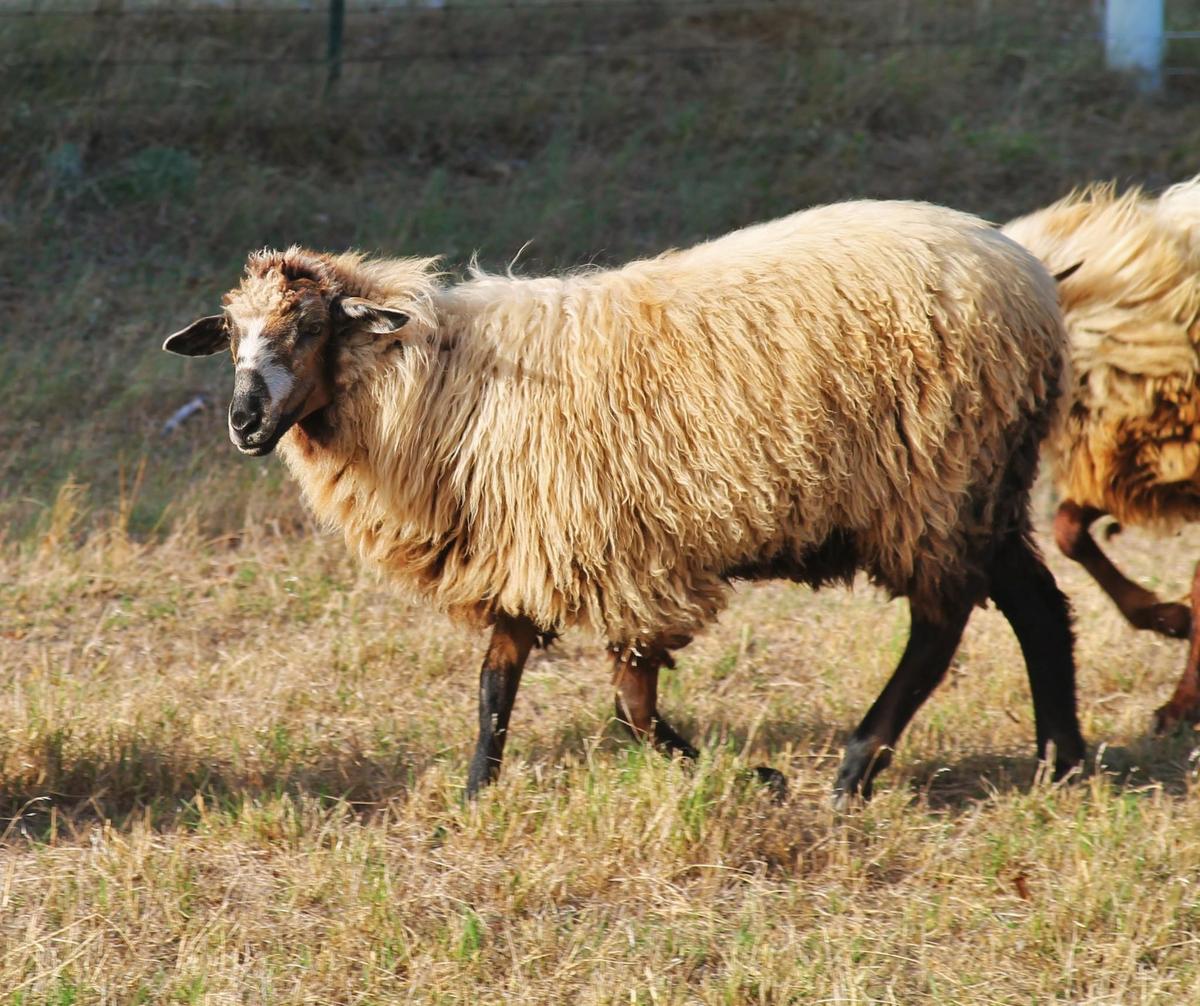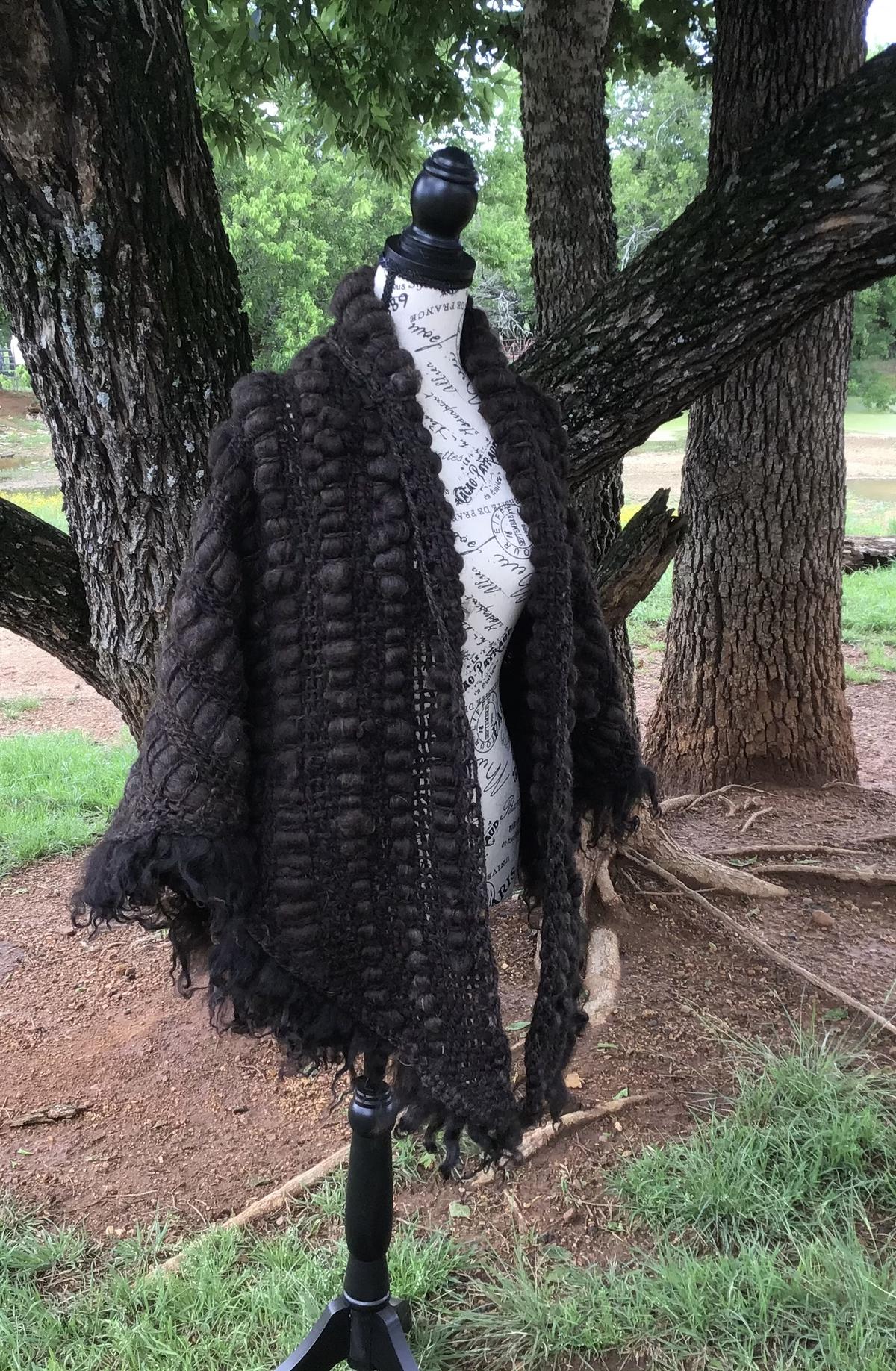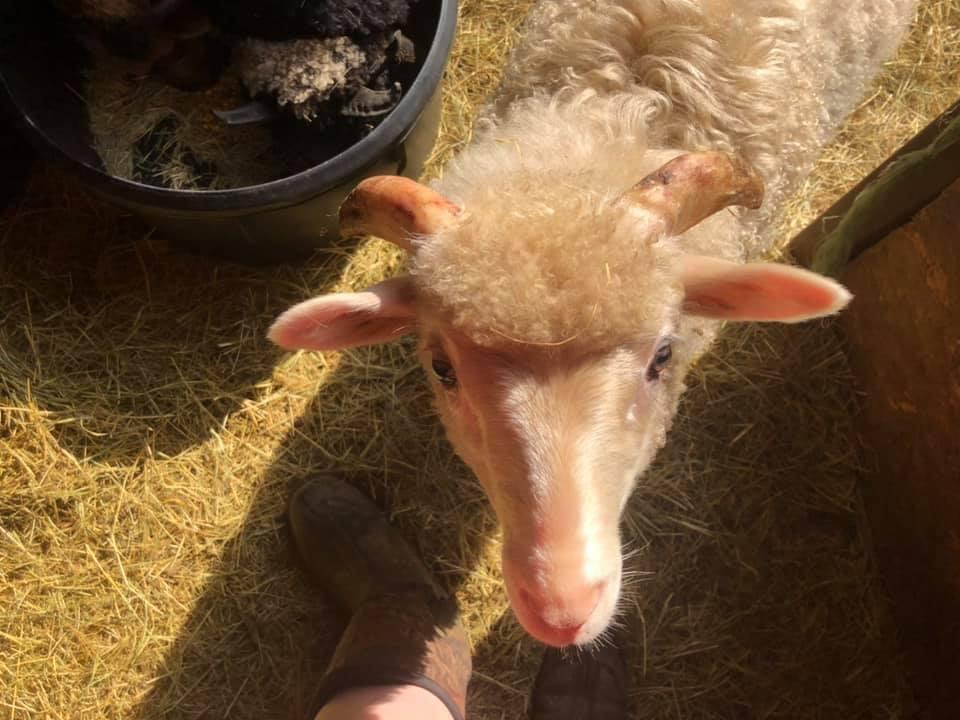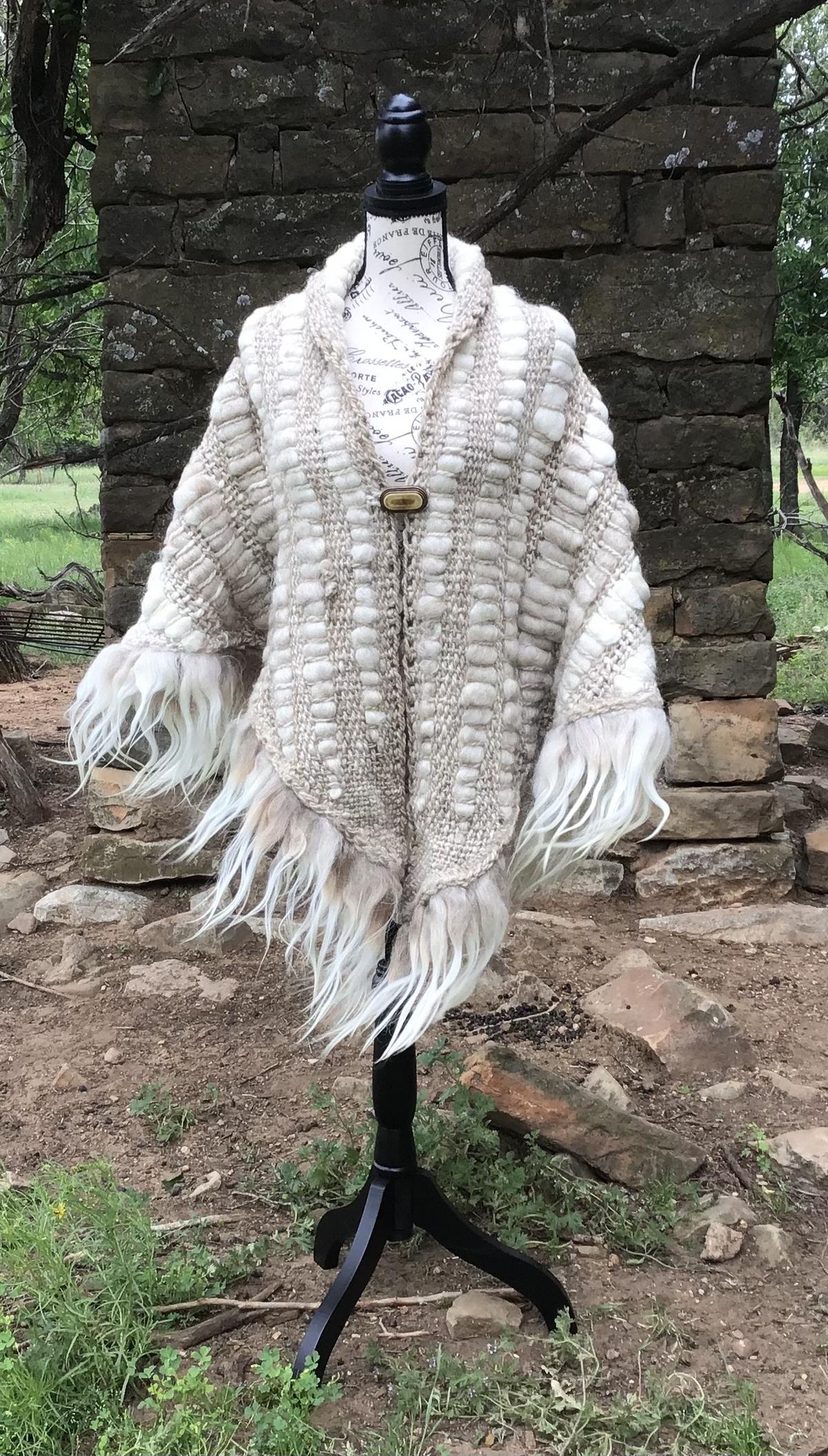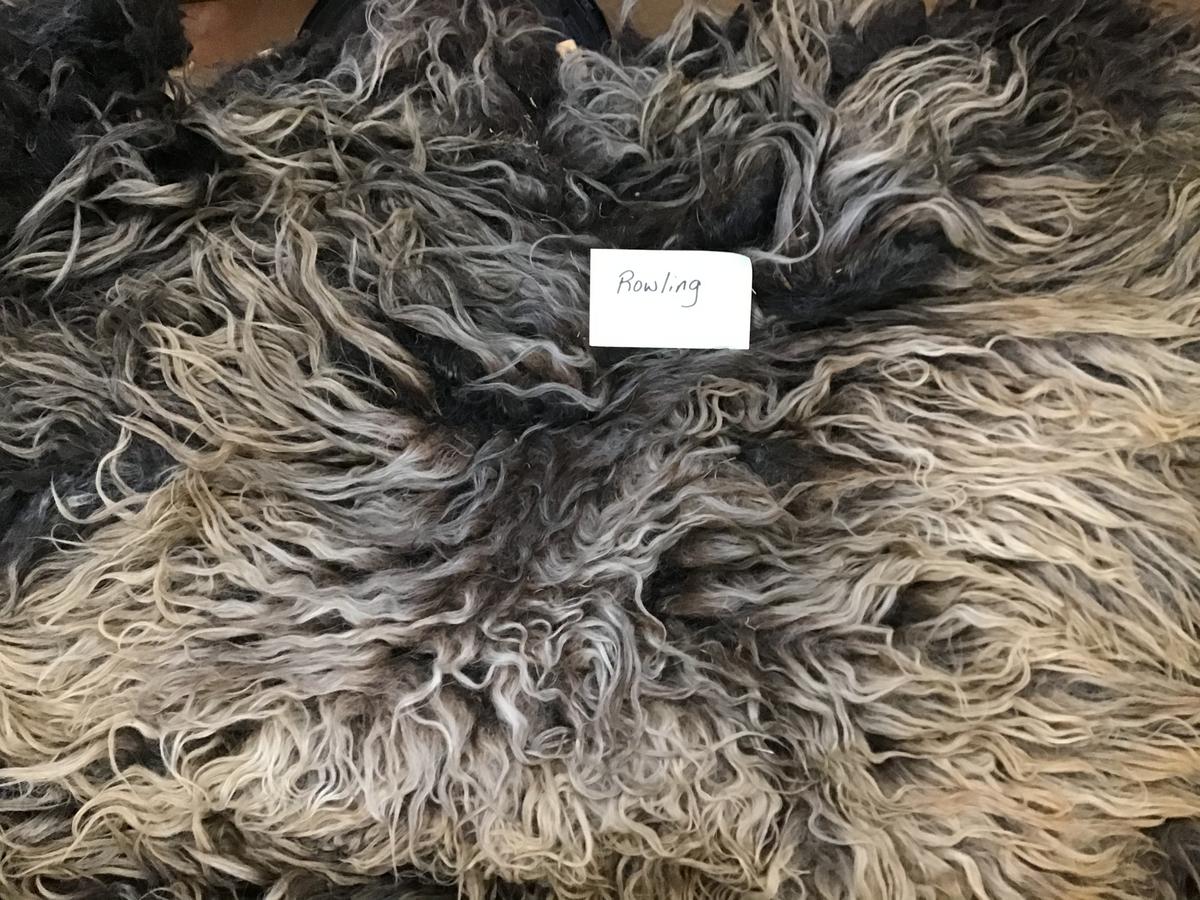|
Blog Monday, June 26 2023
Milking Your Navajo-Churro Sheep
For generations the Navajo-Churro sheep has been used for meat, milk, and fiber, making this breed the quintessential multipurpose homestead animal. While many breeders may focus on utilizing their flocks for meat or fiber, the use of these humble sheep as dairy animals should not be discounted.
Unlike the East Friesian or Lacaune, the churro has not been bred primarily to be a dairy animal, so a typical Navajo-Churro ewe will not produce the high volume of milk as a ewe from a dairy breed would produce. That said, it is still worth the effort to milk your flock of churros. Navajo-Churro milk is very sweet and creamy with none of the gamey taste often found in goat milk. Because churros aren’t bred primarily for dairy use, their bodies do not send every ounce of nutrition into the production of milk. At our farm we used to raise Nubian goats. I have to milk four Navajo-Churro ewes to obtain the same amount of milk I could harvest from one Nubian goat, but I can feed eight or more churros for the cost of feed it takes to keep weight on that one Nubian goat because ever fiber in her body is geared toward milk production not maintaining body condition.
When I crunched the numbers, it was actually more cost effective to milk a flock of Navajo-Churro sheep that I was already breeding for lambs and fiber than to maintain a separate herd of Nubian goats for milk. Because sheep milk is much higher in fat content than goat milk, the soap I produced using the same recipe yielded a creamier bar with more lather than my traditional goat milk soap. My customers very quickly began to demand the sheep milk soap over the goat milk soap. Our farm now derives the bulk of its income from the sale of sheep milk soap. Soap sales far exceed profit from fiber, weavings, or lambs.
My experience is that volume is heaviest shortly after weaning but levels off to somewhere between a pint and a quart, depending upon the ewe. I only milk once a day, and again, depending upon the ewe, I may milk ever other day. Older ewes typically produce more milk than younger ewes. While younger ewes don’t produce the volume of milk, it’s still worth the effort to teach them because next year they will produce more. This year may be more about training than volume.
Now that I’ve told you why you should be milking your churros, let’s discuss the nuts and bolts of how to milk a churro. It’s not like a goat. Do not dismiss your ewes as being too wild to milk. I guarantee you, my flock is just as wild as yours. The difference is that my ewes have learned to use the exchange of milk as a form of currency. They exchange milk for whole corn. I milk between four and ten ewes each season. Over half of these ewes are too wild to pet, but they will hop onto the milking stand, shove their heads in a bucket, and let me milk them.
People assume that the battle is in the act of milking. It’s not. None of my ewes have ever thrown a fit over me touching their udders. The battle is getting them onto the milking stand. Once there, my experience has been that Navajo-Churro ewes are pretty docile. So how do you get them onto the stand?
There are two methods. I’ve used both. You can manhandle them and hoist them up onto the stand, or you can shape the behavior in baby steps like training a dog. Method One is faster. Method Two takes longer but is easier on your back and everyone’s patience. Here are tips for either method. I slip a lasso around their necks and pull them close enough to the stand that I can hoist the front end up, then the back end. You will find that ewes that have to be roped on Week One will easily be hopping onto the stand by Week Two. But Method One is still hard on your back. I try to minimize the number of sheep I have to hoist onto a milking stand, so when I have the time, I always opt for Method Two. Shape the behavior.
The nice thing about this method is that you can do it any time of the year with all members of the flock, whether they will be milked this year or not. I train weanling and yearling ewes with this method because it’s a way to make positive associations with the milking stand.
Instead of trying to train one ewe, it’s actually easier to train multiple ewes at the same time on the milking stand. I keep my milking stand in a stall and allow two to six ewes in at a time with a bucket of corn. I sit down and hold the bucket so that they push and shove against each other for corn. A couple of days of this and they will be pushing to get to the stand. Even the shy ones will eventually come around. The next stage is after they become a pushy mob. I then stand up and lean over the milking stand to offer the bucket. The ewes must put their feet on the stand to access the bucket. The greedy ones will soon teach the others to put their front feet on the stand. I stay at this stage for a few weeks to allow them to gain their confidence in the process. The next step is to maneuver the bucket in a way so that all four feet must be on the stand to access the bucket. You will generally find that one greedy Rocket Scientist figures this out long before the others. Others will soon learn from her example but four ewes cannot fit on the stand at once, so I start siphoning off the greediest ones for private lessons alone or in pairs. Sheep are bolder when they have company. Use that to your advantage.
After the ewes are confidently hopping onto the stand with all four feet, I put the bucket in a trough in front of the milking stand. I have found that feeding horned ewes from a bucket hanging from the front of the milking stand results in horns getting caught in the bucket handle when the ewe raises her head. This causes unnecessary panic. To avoid this, I place the milking stand facing the wall, and set the bucket in a feed trough attached to the wall. This eliminates the issue with horned ewes getting caught in the feed bucket.
Each ewe will be different and will progress at different speeds. Some will master it quickly. Others will need more time. Some things stay the same though. Sheep are more comfortable with buddies. Even experienced ewes may need a refresher at the beginning of the milking season. The first week is always the hardest. By week three it’s usually a breeze. The most important thing to remember about milking churros is that there are no absolutes. There is no right or wrong. Every farm will be different. Give your girls a chance. I assure you, some of my best milkers are still very wild sheep, but during milking season they are quite pushy about climbing onto the stand to exchange milk for corn. Given a bit of corn and a lot of patience, yours soon will be too.
Red Feather Navajo-Churros Jacksboro, TX Theredfeatherranch.com
Monday, August 15 2022
Here are updated pics of some of the lambs from the 2022 Lamb Crop. All were sired by baw Aragorn.
Friday, June 04 2021
This shawl was made on a 7' triangle loom in the continuous strand method using yarn and roving from several of the black lamb and yearling fleeces.
Wednesday, May 26 2021
Saturday, May 15 2021
This unique shawl was made on a triangle continuous strand loom using yarn, roving and locks from Cranberry Salsa and Maddie. The finishing piece was an antique button found in a box of personal items, along with old love letters tied with a frayed ribbon, in a elderly war bride's vintage home.
Roving was woven and felted to add texture.
It all starts with the sheep - Cranberry Salsa and Maddie.
And it ends with a happy customer!
Saturday, May 15 2021
Shearing Day is always so exciting but with a tinge of anxiety. Be it six months or a year, that fleece is the culmination of a season of work. It's the frustration of sheep having parties with alfalfa and cockleburrs. It's the pleasant surprise of some fleeces better than expected, and the disappointment of others less than stellar.
Shearing Day is a flurry of activity. Shearing, bagging, sweeping, repeat. Again and again. Naked and happy ewes bounce off to join others while we grab the next one up. And a few hours later we are left with bags and bags of hope. And the next level of work begins.
Saturday, March 20 2021
I love to get photos of my pieces in their new homes! This Vintage Art Yarn Wrap was made with fiber from Cranberry Salsa and edged with locks from Deacon. It was made on a rectangle continuous strand loom with art yarn which was spun thick and thin. It was then woven with puffy roving from Deacon. Carole models it beautifully with an orchid that really brings this piece together!
Thursday, March 18 2021
On 3/6/21, RED Wind River Sue had a very difficult birth. We were able to successfully pull the first ewe lamb, who was able to nurse, but we later lost Sue and the other lamb. The single black ewe lamb is now a bottle baby and was named Teeter. She has become a house lamb and will be a "lamb-bassador" for the breed at Farmer's Markets and other events.
Thursday, March 18 2021
On 3/16/21, Rowling had a ram lamb sired by Dot Escalade. The lamb was born shortly before violent storms rolled into the area so he was named Storm. Thursday, March 18 2021
On 3/14/21 Ravenclaw had a black ewe lamb sired by Dot Escalade. The lamb has marking on her face that looks like a question mark complete with the dot, so she was named Riddle. |



